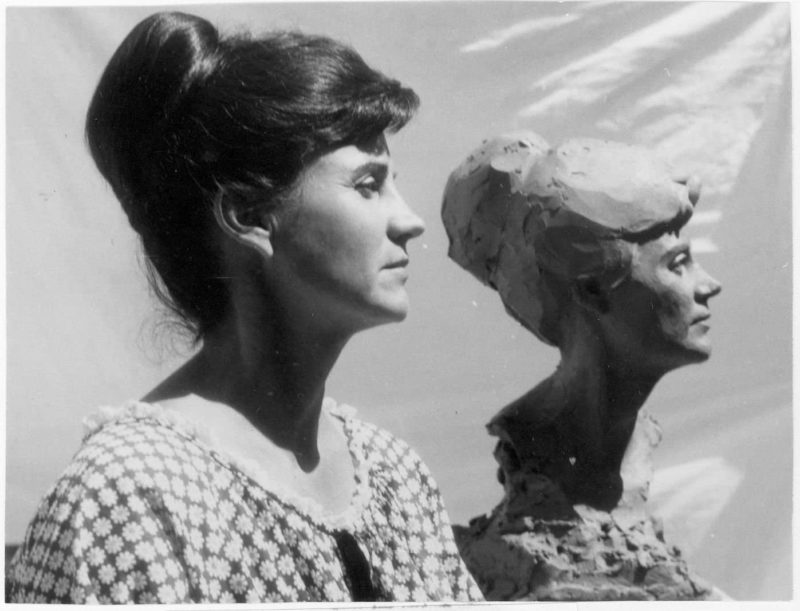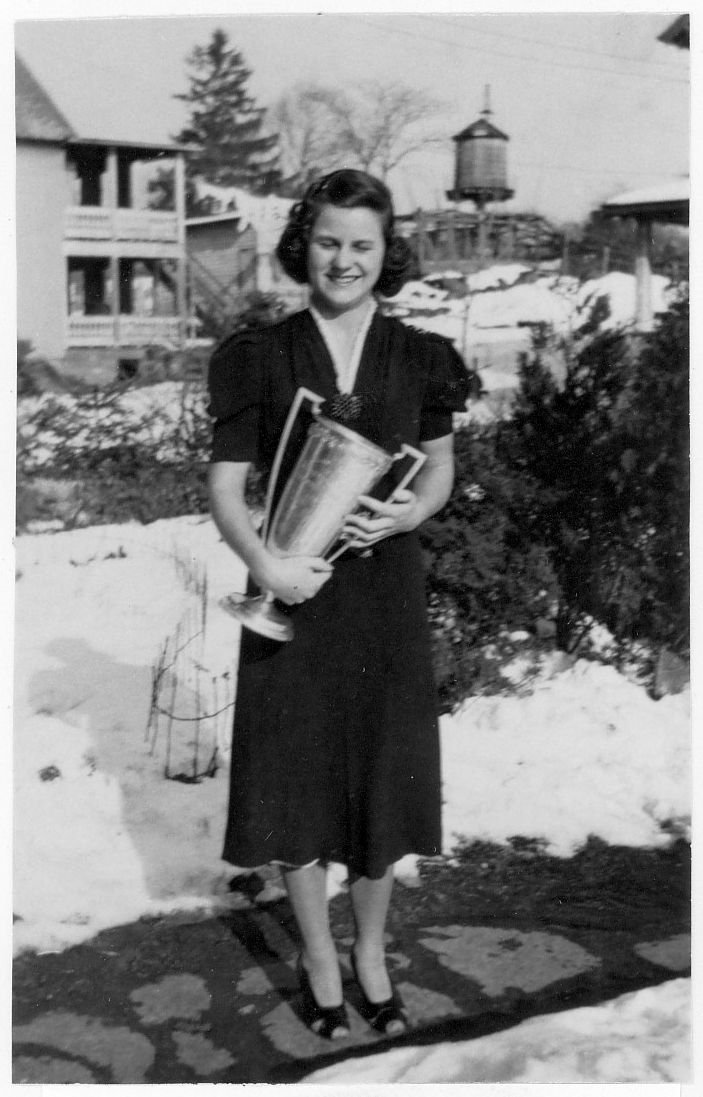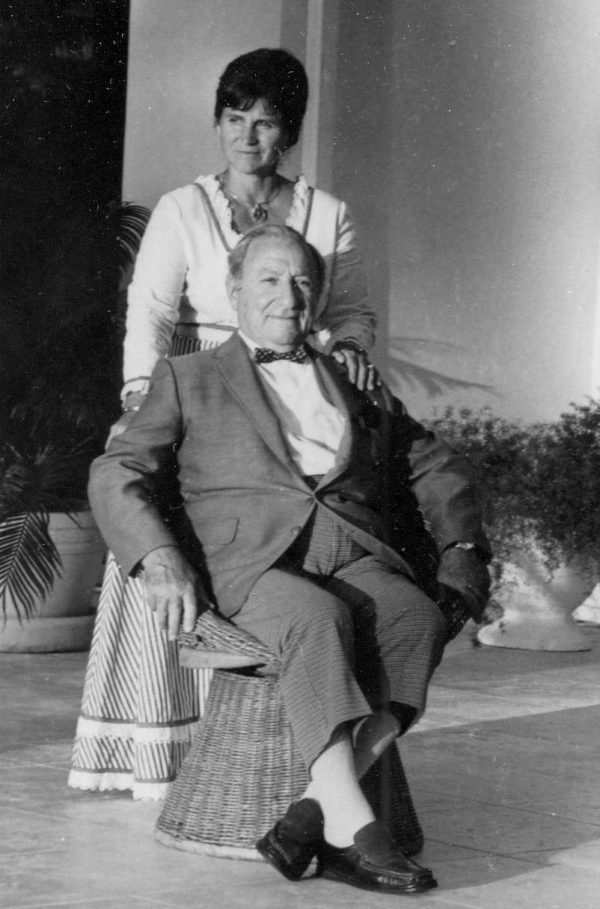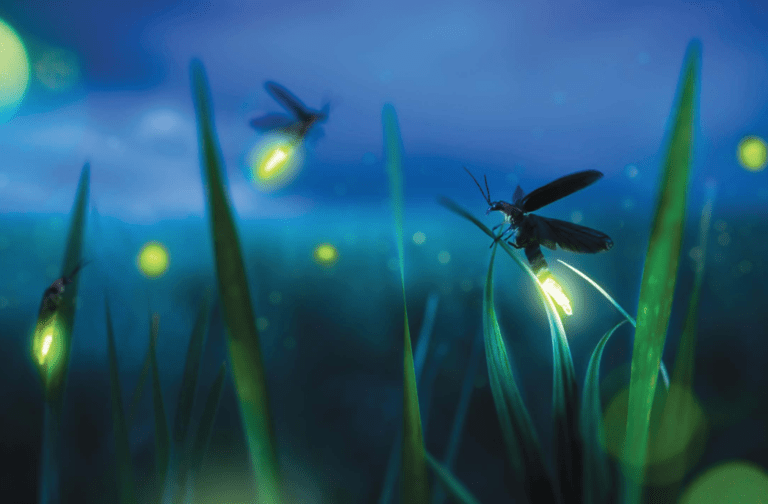
By Mary A. Jacobson
“I just knew things would get better if you worked hard, and I did work hard. I felt that you get out of life what you put into it.”
Looking back on her life, when interviewed in 1975 by Oral History Project volunteer Penny Bott, Olga Zatorsky Hirshhorn credited her formative years in Greenwich and her work ethic as the building blocks of her character. “Having been born here (in Greenwich) was one of the most important things in my life; and being intelligent enough to take advantage of all the opportunities that were here.”
Olga’s parents were Ukrainian immigrants who arrived in Greenwich in 1916. Working initially as a gardener and a laundress, they provided for their family of three children in a tight-knit community centered on their life on Le Grande Avenue. Olga was born in 1920. “I had a great life as a child here because we were surrounded by fields and woods. The woods are now the Milbrook section; and the Cows Lots, where we had many picnics and campfires and berry-picking periods, are what is now Quarry Knoll.”
Ever enterprising, Olga and her siblings “made extra money by selling to the junkman who came up the street in his horse and wagon. We would hear his bells ringing as he rode up Davis Avenue… and we scrambled around and gathered our saleable items. He gave us a penny a pound for rags and five cents a pound for copper and lead. The copper came from wiring we found in the dump.”
Olga credited her hard-working parents for providing a secure life for the family. Her mother also worked at Electrolux and “as children growing up on Le Grande Avenue, we felt pretty well-off because we always had a car; we always had a telephone; and we always had a real Christmas tree.”

Olga remembered that from a young age “I had to do things for myself.” At the age of nine, she read in the newspaper about a Girl Scout group that was active in Christ Church. “I told my mother that I wanted to be a Girl Scout and she said, ‘That’s all right.’ . . . I walked up there all by myself and just joined. No one knew who I was. No one knew who my parents were… I just loved it. I worked so hard on all those merit badges.”
At Greenwich High School, Olga distinguished herself with her many leadership roles in school activities, including president of the Spanish Club, the G.O. (General Organization), the Girls’ Athletic Association, as well as editor of the school newspaper. Upon graduation, she received the Stanley Finney Award (a scholarship of $25 “which in those days was considered a lot of money”) and the Macy Cup “which made my parents very, very proud.”
One year after graduation, Olga married the English teacher, John Cunningham, who had been the faculty advisor to the school newspaper. “I had three sons with him and was a faculty wife for twenty-three years” before the marriage ended in 1962. In order to supplement her husband’s teaching salary, Olga relied on her independent, entrepreneurial spirit. “I just felt I had to earn money and I had no formal education. I couldn’t really type… and I didn’t want to leave my children.”
An excellent swimmer, Olga started the first learn-to-swim program at Tod’s Point and advertised that she would pick up and return the children. “I just squeezed as many children as I could get in the car.”
Once they moved to a larger house, Olga started a nursery school there. “The day I said the school was opening, I had one child.” Once again, Olga advertised picking up and returning the children. “I remember picking up the child and the mother saying, ‘Where are the other children?’ And I said, ‘Oh, I haven’t picked them up yet.’” By the third week, the “group got so large, I had to stop.”
In the early 1950s “I had decided I had had enough of putting on leggings and boots and winter clothes and wiping noses and decided to start—and it was one of the first, I guess—a babysitting service.” Olga explained, “It was something I could do from home.” Within a short time, clients would call her for recommendations for other needs such as a cleaning woman, a cook, a nursemaid. “And I said yes to everything and went about finding it. . . It was very funny. I’d hang up the phone and say, ‘Now what am I going to do?” Olga would put an ad in the paper for the position, and then “I’d end up with far more cooks or nurses than I needed.” With the additional responses she received, she would advertise in the paper “Cook (or nursemaid) available.”
Eventually, Olga realized that she was inadvertently in the employment agency business. “The phone would ring so early in the morning that I couldn’t get dressed… and so late at night I couldn’t get dinner ready…What I did was all on the phone… I had quite a file of people that were capable of doing many things.” Within the year, she rented office space in downtown Greenwich, hired some employees, and named the business ‘Services Unlimited.’”
One day Olga stopped by the office and picked up the phone to a request for a chauffeur from a Mr. Hirshhorn. After numerous conversations for fulfilling various needs, they developed a rapport on the phone and, eventually, Olga met him at his house when he was sitting for a bust. While talking to the artist, she asked, “Who is this Mr. Hirshhorn anyway?” only to learn that “he’s a famous art collector, and he has the biggest art collection in the world.”
Two and-a-half years later, they were married. Olga sold Services Unlimited to one of her employees and then began a totally new life as she stepped into the role of Mrs. Hirshhorn. During their marriage, The Joseph H. Hirshhorn Museum and Sculpture Garden was conceived and completed as part of the Smithsonian Institution in Washington, D.C.
Married eleven years at the time of her OHP interview in 1975, Olga Zatorsky Hirshhorn reflected, “I thought I had led a very interesting life before I met Joe but, in retrospect, I feel I must have lived in a vacuum because he opened a new world to me – this world of art.”








